Rice is funny sometimes.
You can cook it perfectly a dozen times, but every now and again you’ll overdo your water, use too much heat, or simply use rice that’s too starchy and end up with a gooey mess. Never fear – you’ve got some options that can save your meal – it’s all a matter of adding a few new tricks to your sleeve to keep handy in case you overcook your rice.
Without further ado, let’s explore those tricks so that you can add them to your arsenal. Let’s talk about how to fix overcooked rice or — failing that — how you can change things up so that your mistake looks like it was 100% intentional!
Bottom line upfront
In most cases, it boils down to a few basics. First, some rice is overly starchy on purpose, such as short-grained white rice, and by rinsing any rice that you cook beforehand you can reduce the overall starch and avoid this problem in most cases.
Next, you may be using too much water, so check your recipe amounts carefully and try to deviate. Finally, watch the heat – the goal is to get it to boiling so that you can reduce it to a simmer and let the steam do the rest!
If all else fails, you can try to salvage it through baking or microwaving, or simply segue smoothly into a different recipe that makes the overcooked rice a plus, rather than a mushy minus!
What happens when you overcook your rice?
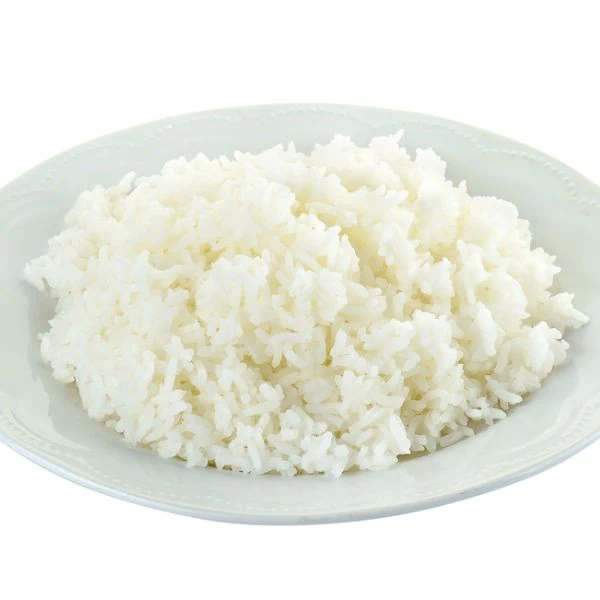
When you overcook your rice, unless things go into ‘scorched’ territory, what you are dealing with is a sticky, gummy mess. This can come, in part, from too much water or not letting the rice sit after cooking, but quite often it just has to do with the natural starch content of the rice.
Some kinds, like short-grained white rice, have the most, but you’ll find two types of starch in every rice. The first type is Amylose, which is a starch molecule that will actually get cooked out of the rice, but the second type of starch is Amylopectin – and this starch gelatinizes.
Amylopectin is great for sticky rice dishes, but if that’s not what you’re going for, usually giving the rice a good rinse before you cook will help to avoid the issue altogether. If you’ve already cooked it, however, then you’ll need to take a different tact.
Let’s look at how to improve the texture of sticky, overcooked rice and also some options for ‘moving the goalpost’ by creating dishes where the stickiness is a perk!
Improving the Texture
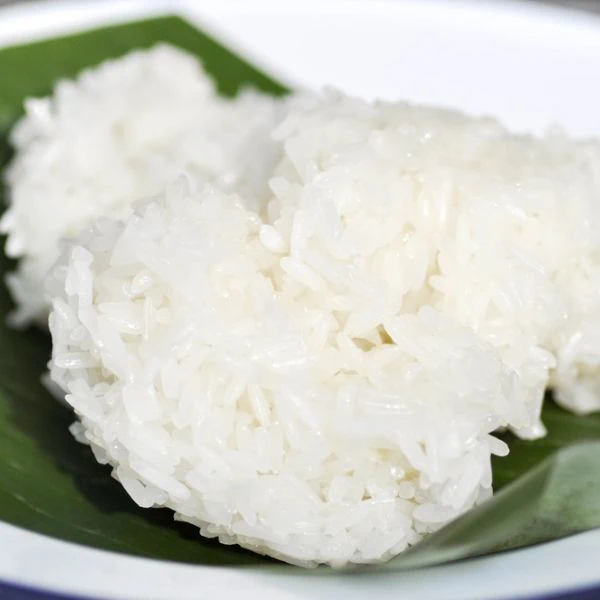
In some cases, overly-gooey rice can be simply heated and rinsed, or you can add something to act as a desiccant in order to help dry it out. In this section, we’ll offer you a few methods for doing this and we’ll also touch on what you can do if the rice is actually falling apart.
Don’t worry – you might yet save your rice! We can’t promise anything, but below you’ll find the methods that will give you the best chance of success. Oh, and before we start, if you didn’t let the rice sit for 10 minutes with the lid off, then be sure to fluff your rice a little and let it do so.
You’ll be surprised how often that can make a positive difference! That said, let’s look at what to do when it doesn’t!
Microwave It Dry
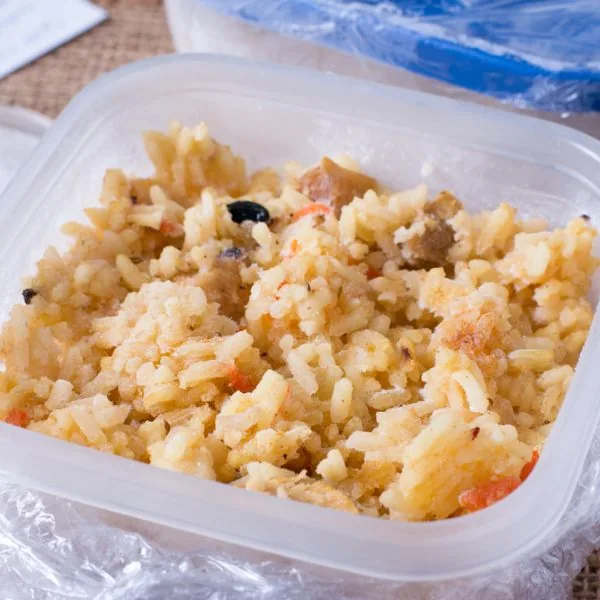
Microwaves are a great way to cook rice in the first place. In a sealed, plastic container that can take the heat, the microwave creates steam inside and with a little practice, cooks perfect rice every time. To use it to salvage already overcooked rice, however, here is what you need to do:
- Over the sink and wearing gloves, carefully dump your overcooked rice into a large sieve, and then give it a quick rinse with cold water. Shake it a bit to get out as much water as you can in a few moments, and then transfer it to a microwave-safe plastic container – but leave the lid off.
- Microwave it for about a minute, so that we can evaporate some of the water off. You can also put the microwave on 50% power and microwave it for 2-4 minutes to see if this helps.
- As long as the heat is kept low, you can do this a few times, just be sure to fluff it a bit with a fork in between sessions. If 2 to 3 short sessions don’t help to improve the consistency, then simply move on to the next method and it should do the trick nicely!
Bake It Off
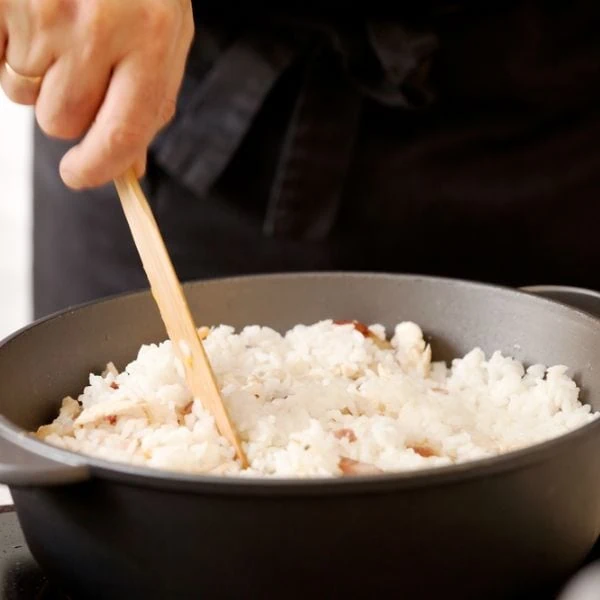
Baking your rice to fix your overcooked rice issue is another solid strategy and as a bonus, it gives you a chance to add cheese later for a minute or two once the consistency is fixed if you feel like upgrading your meal! Here are the steps to follow:
- Go ahead and preheat your oven to 350 degrees and while it’s heating up, get out a baking tray and line it with parchment and a little non-stick cooking spray, or give a non-stick spray to a glass baking dish – either is fine, but you’ll get better results with the tray, as you can distribute the rice more evenly.
- Give your rice a rinse through a colander and let the water run through it until it clears – that will show you that you’ve gotten most of the starch out. Shake the colander a bit to get out as much water as you can, and then put the rice in your baking dish or spread it in a thin, even layer on your tray.
- Bake your rice for 5 to 10 minutes and leave the door open for best results. Check the consistency every now and again until it is just about perfect. Note: any cracked pieces or clumped bits may have to be ‘fished out’ and dumped, but you should be able to save most of your rice!
The Bread Trick
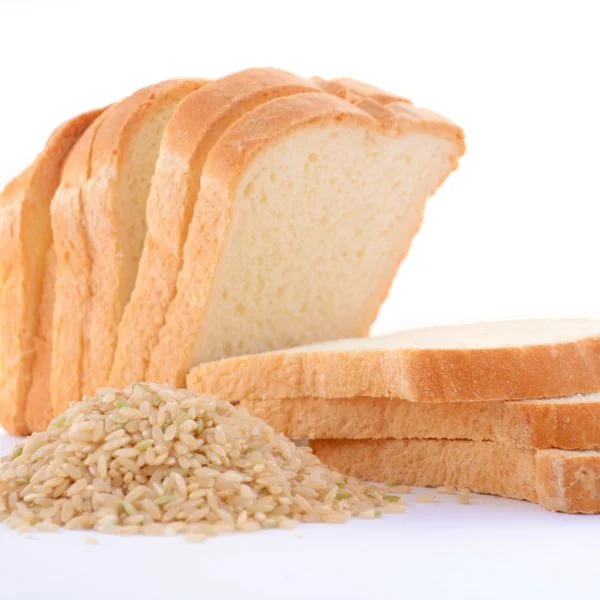
Adding a piece of bread on top of your rice and letting it sit for a few minutes can sometimes help when you’ve got too much liquid in the rice and it also helps to draw out the scorched flavor when you’ve burnt your rice a little!
To do this trick, simply place a piece of bread in your rice pot so that it’s sitting on top of your rice. Cover it back up and let it sit for a few minutes. The bread will act as a desiccant, to soak up some of that moisture, and this difference might just be enough to make your rice much more enjoyable!
Fixing Fall-apart Rice
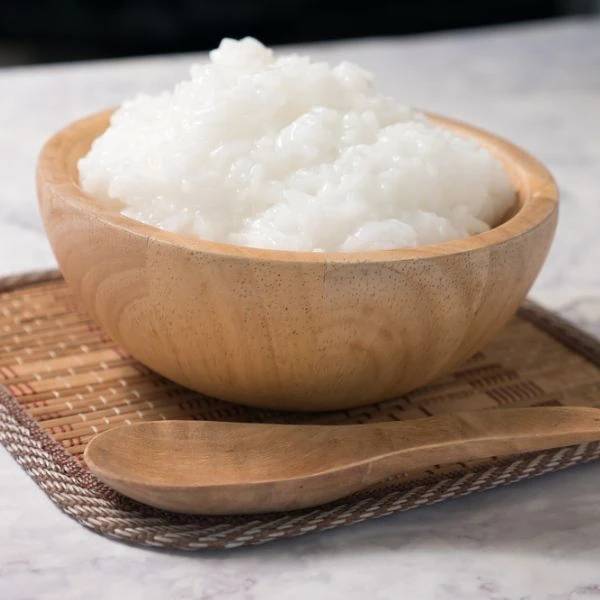
If the rice has been overcooked to the point that it’s practically falling apart, there is something that you can try in order to save it. Just be warned – this won’t save ALL of it – but if you’ve just cooked the last of the rice and are trying to avoid leaving the house, then this might be just the trick that you need.
Just follow the steps below:
- Give your rice a thorough rinse in the colander, until you can see that the water is running through it clear, instead of murky.
- Spray a little non-stick cooking spray on a cookie sheet or baking tray and spread the rice into one big, thin layer on top.
- Place your rice tray inside the refrigerator, letting it cool inside for no less than 30 minutes. During this time, some of the excess water may pool at the sides of the tray and that’s expected, so don’t worry if you see it!
- Dump off any excess water and refrigerate for another 30 minutes, but if the rice doesn’t have any, then you can just skip to the next step.
- Preheat your oven to 350 and once it’s heated up, place your rice inside and bake it for about 5 minutes. Your rice should be ready to fluff up and serve or you can store it away for later, as you like.
Moving the goalposts
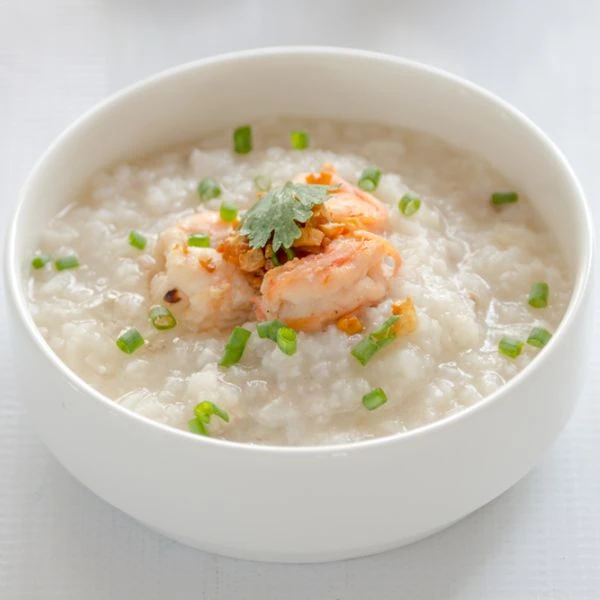
If the gelatinous, overcooked rice has ruined your appetite a bit, then don’t despair just yet. You can always ‘move the goalposts’, so to speak, by simply preparing it a different way. This will usually get your appetite going by simply moving your craving toward something else.
Fry it
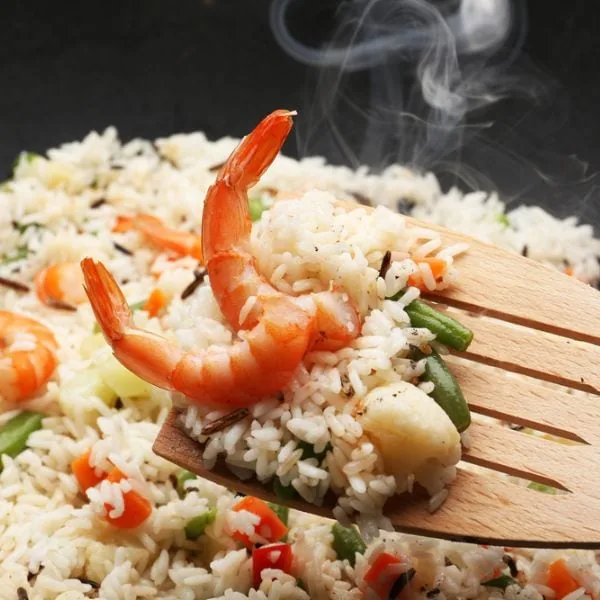
One of the easiest ways to fix the occasional rice mishap (and this author’s favorite) is to simply fry it up. Just take this basic recipe and tweak it with whatever leftover veggies you have or your favorite spices just to customize it to your tastes. The scent alone from cooking it should boost your enthusiasm and your meal will be saved! Here’s a generic version of the recipe and you can substitute whatever you like in place of the veggies and spices:
Ingredients
- 3 cups of your gooey rice, well-rinsed through the colander
- 2 tbsp veggie or flavored oil of your choice
- ½ cup of chopped onion
- ½ cup of carrots (chopped into little cubes)
- ½ cup of frozen peas
- 2 tsp of garlic (minced)
- Pat of butter or margarine (optional)
- 2-3 dashes of soy or another sauce that you like
- Salt and pepper to taste
Instructions
- Heat up 1 tbsp of your oil in a large pan (or a wok, if you’ve got one!) and add in your carrots, cooking them for around 3 minutes or until they are soft before adding your garlic, onions, and that optional butter or margarine. The garlic is fine on its own if you don’t want those extra calories.
- Add your second tablespoon of oil and your peas, cook it all for a minute or two, and then add in your rice.
- Stir fry it for 2 – 3 minutes if you are using a wok and 3 – 5 minutes with a regular pan. Take your rice off the heat and let it sit for a few minutes and voila – your meal is ready to serve!
You could make meatballs
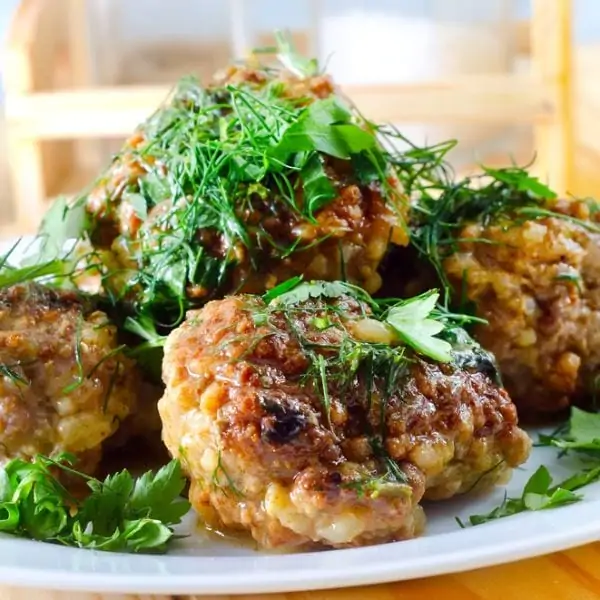
Instead of using the traditional breadcrumb recipe, you can mix in a little of your overcooked rice with ground beef, pork, minced meat, or other meat favorites and make some enormous meatballs to snack on.
Rice makes an excellent filler for this – you can spice it as you like or leave it plain — and you can simply refrigerate the rest or make a big ol’ batch of meatballs to snack on for the next couple of days.
Just mix your overcooked rice with the beef (I like to add a little raw egg too for extra binding) and fry them up, bake them, or stick them for about 4 and ½ hours in a slow cooker at about 160 degrees. If you are making a big batch with the slow cooker method, then invest in some slow cooker liners — you can add more than one bag so that your meatballs are cooking separately on 2 or 3 different layers and if you like a little variety, you can play with individual flavors on each level.
Hey, experimentation is half the fun, no? Enjoy your meatballs!
Whip up some rice pudding
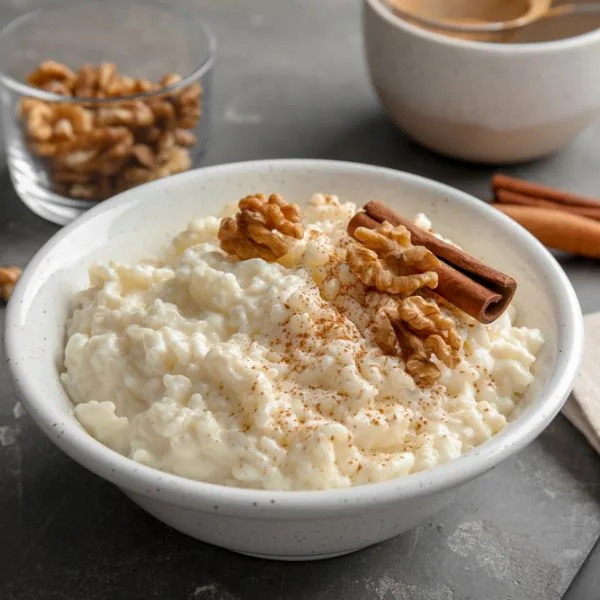
Rice pudding is a nifty way to save your overcooked rice by transforming it into something undeniably yummy. All you really need is milk, heavy cream, 1 egg, vanilla, cinnamon, nutmeg, and sugar, and you can even throw in some fruit bits if you’ve got ‘em around the house.
Here’s a quick and dirty example that you can play with:
- Put your cooked rice into a saucepan, adding in your milk and a dash of salt. Heat on medium-low and stir occasionally for about 10 minutes, so that it thickens up nicely.
- Whisk up your egg with a splash or 2 or two of cream, along with your cinnamon and nutmeg, and put this aside for a moment.
- Start stirring in sugar to your rice and milk mix until it’s sweetened to taste. You can add a little honey if you like too, but that’s up to you. We’re keeping this recipe fairly freeform to encourage you to play with it!
- Add in your cinnamon-nutmeg cream, stirring well, and if you have some fruit bits to add, then now’s the time to do it!
- Stir the rice pudding until it thickens up nicely and take it off of the heat. Add a pat or two of butter, and a couple of drops of vanilla extract (you’ll figure out how much you like over time, just be careful because it’s strong), and stir well.
- Let it sit for about 10 minutes, giving it a quick stir once or twice while you wait, and your rice pudding is ready to serve. Be sure to chill a little for snacking on later – some foods taste great cold and in this author’s experience, rice pudding is pretty big on that list!
Oh, before we move on, we should mention that if you’re feeling lazy, you can also just put a little of your overcooked rice in a bowl, add a spoonful of sugar, 2 shakes of cinnamon, a splash of milk, and a drop of vanilla and it tastes pretty darned good that way. Cooking it with the recipe is definitely better, but the ‘lazy’ version works in a pinch if you’re hungry, frustrated, and need a quick morale boost!
FAQ
Okay, so you’ve got some techniques now that you can use to help fix your overcooked rice or transform it into something else.
That’s great, but before we go, we’ll give you the answers to some frequently asked questions about overcooked rice. It’s easy to miss a few things, after all, so we hope that you’ll find this section useful and can put this information to good use!
Can you eat slightly overcooked rice?
Well, you can, but it’s really not so good for you. When you overcook the rice, a lot of things happen that are definitely not perks. Amino acids, for instance, can get destroyed and as these are important foundations for protein, the overall nutritional value of your rice is definitely compromised.
It’s also harder to digest – while you’ve got enzymes in your stomach that help, there are also some enzymes in rice when it’s properly cooked that are lost when it is overcooked. Next, the vitamins in the rice are also reduced, but the final caveat of overcooked rice is a compound known as Acrylamide.
Acrylamide occurs in many different foods when they are overcooked and studies have shown that it contributes to the risk of bowel, breast, ovarian, and mouth cancers. Keep in mind that this is a very small risk, but it’s also a good reason to get into the habit of carefully cooking all of your foods to help avoid creating acrylamide factors in your food!
Is chewy rice overcooked or undercooked?
Chewy rice is actually undercooked and easy to fix with just a few more minutes on the stove. What you are experiencing when you bite into a chewy bit is the result of water soaking in the outer layers, but not quite reaching the center.
Further cooking the rice and letting it sit for a full 10 minutes afterward will help to cook it all of the way through, so that it is fluffy and delicious instead of ‘oddly chewy’.
Does adding more water to overcooked rice make it less sticky?
No, it’s actually quite the opposite. Adding more water is a good way to end up with even stickier rice, so it’s best to avoid that.
You can put some bread on top of the rice and close the lid, as we detailed earlier in this article, or you can even add a little salt – regular or flavored – and this will act as a desiccant to help dry it out a bit.
Why do I always seem to overcook my rice?
The top 2 reasons that this occurs are failing to rinse the rice first and not using the right amount of water.
The next time that you cook your rice, give it a rinse first in a colander until the water runs clear. After that, dump your rice in the pot, and after cleaning your hands, stick your index finger on top of your rice in the middle.
Add water until it reaches the first knuckle and try cooking it with this amount. The ‘Finger trick’ is a neat little hack that’s used throughout various parts of Asia and the rest of the world and once you try this, you’re going to see the why of it firsthand.
Prepare to be pleasantly surprised and enjoy your perfectly cooked rice!
Some closing comments on overcooked rice
Today we have explored the pitfalls of overcooking which result in gooey, gelatinous rice, and the first thing you’ll want to do to avoid this is to get in the habit of simply rinsing it first. While this can reduce nutrients in some types where it has been artificially added, rinsing the rice will reduce the excess starch content and you can make up for vitamin loss with added veggies you were probably going to include anyway.
Baking the rice or cooking it in a microwave can also help to save an overcooked batch, and while the consistency won’t be quite the same, it will definitely be improved. Barring this, you can fry it up, make meatballs, or a delicious rice pudding and still save the day and be sure to check out other recipes that call for sticky rice to begin with – you can never have too many recipes, after all.
If the rice is completely falling apart, then spreading it on a cooking sheet and refrigerating it can keep the whole bits from breaking further, and after that, you can bake it up and save the lion’s share.
So, the next time you overcook your rice, don’t panic – you’ve definitely got options. It’s just a matter of trying them out and keeping your favorites!
References/FYI
Utopia; “How to fix mushy rice”
She knows; Brooks, Sarah; “Don’t Throw Out Overcooked Rice — Make These Dishes Instead“
Cook Gem; “How to fi mushy rice in a pressure cooker“
Quick Easy Cook; “How to Fix Mushy Rice: Amazing Tricks to Try Now”


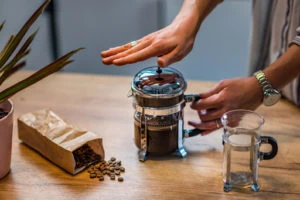
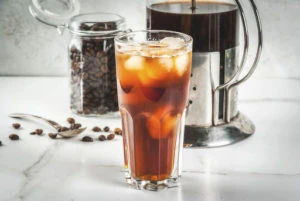

David learned to cook at an early age after his mother told him that he couldn't live on pizza forever, Dave uses his modest kitchen skills to recreate sorely-missed recipes from home and to occasionally make new favorite ones from places he is visiting.